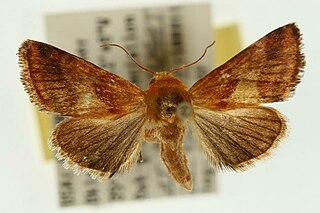
Schinia varix is a species of moth belonging to the family Noctuidae. It is found in eastern Texas, central Oklahoma and Louisiana.

Sparkia is a genus of moths of the family Noctuidae. It contains only one species, Sparkia immacula, which is found in Arizona and New Mexico.
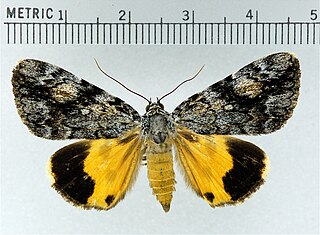
Catocala amica, the girlfriend underwing, is a moth of the family Erebidae. The species was first described by Jacob Hübner in 1818. It is found from southern Canada through the United States east of the Rocky Mountains, ranging westward to Oklahoma and Arizona, northward to Minnesota and southwestward to Texas.

Schinia ciliata is a moth of the family Noctuidae. It is found from southern California east to Utah, Arizona, Colorado, New Mexico, western Kansas and Oklahoma, and scattered throughout Texas.
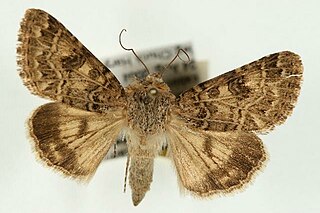
Schinia cupes is a moth of the family Noctuidae. It is found from Texas, west to New Mexico and north to Kansas and Colorado.
Schinia crotchii is a moth of the family Noctuidae. It is found from southeastern Arizona west to the Peninsular Ranges of southern California and north in south-eastern Washington and southern Idaho.

Schinia florida, the primrose moth, is a moth of the family Noctuidae described by Achille Guenée in 1852. Its range includes most of temperate North America aside from the west coast.
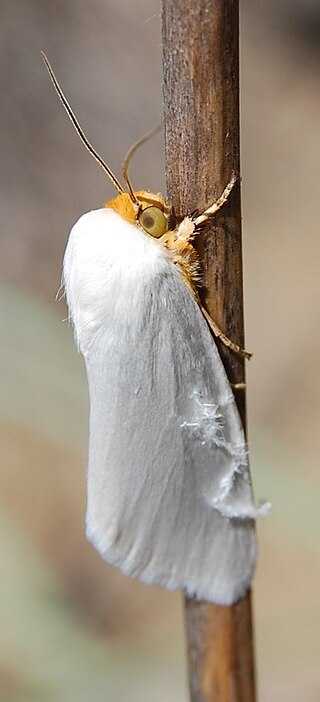
The white flower moth is a moth of the family Noctuidae found in the United States and Canada. It is designated as Endangered under Canada's Species At Risk Act and Manitoba's Endangered Species and Ecosystems Act.
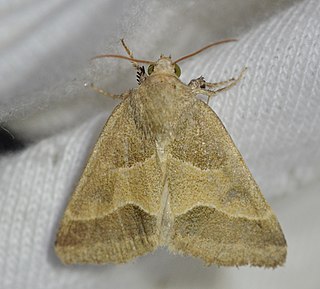
Schinia gracilenta, the slender flower moth or iva flower moth, is a moth of the family Noctuidae. The species was first described by Jacob Hübner in 1818. It is found from the US states of New York to Florida and Nebraska to Arizona. The species is listed as endangered in Connecticut.
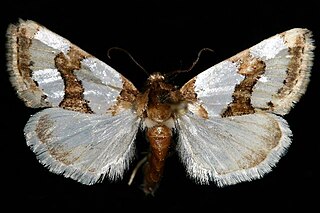
Schinia chrysella is a moth of the family Noctuidae. It is found throughout the central United States south to Monterry, Mexico.
Schinia maculata is a moth of the family Noctuidae. It is only known from south-eastern Texas.

Schinia pulchripennis, or the common flower moth, is a moth of the family Noctuidae that is distributed throughout North America, including California and Nevada.

Heliothinae is a small, cosmopolitan subfamily of moths in the family Noctuidae, with about 400 described species worldwide. It includes a number of economically significant agricultural pest species, such as Helicoverpa armigera and Helicoverpa zea.
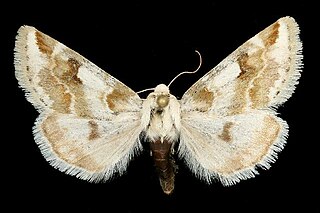
The rabbitbush flower moth is a moth of the family Noctuidae. It is found from central Arizona and New Mexico, north to Colorado, south-western Wyoming and Utah, west to Nevada and California, and north to Oregon, Idaho and Washington.
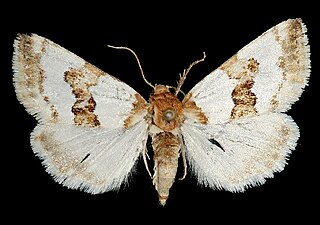
Schinia chryselloides is a moth of the family Noctuidae. It is found in Colorado from the base of the foothills in Jefferson County, east to Lincoln County, in extreme south-eastern Colorado, south to south-eastern Socorro County, New Mexico, and east to the south-eastern panhandle of Texas and extreme southern Texas.
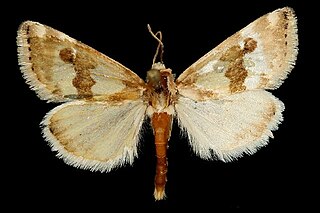
Schinia alencis is a moth of the family Noctuidae. It is found from south-eastern Colorado to south-eastern Arizona east to western Oklahoma, northern Texas to south-western and south-eastern Texas.

Schinia lynda is a moth of the family Noctuidae. It is only known from the dunes in the high desert of south-central Oregon.
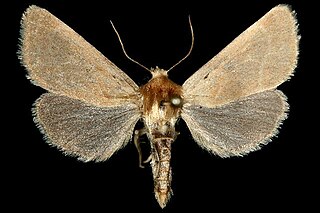
Schinia immaculata is a moth of the family Noctuidae. It is endemic to the area surrounding the Colorado River in the Grand Canyon in Coconino County, Arizona.
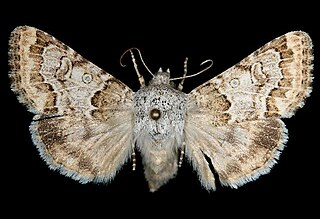
Schinia deserticola is a moth of the family Noctuidae. It is found from southern California to southeastern Arizona and north to west central Utah and southeastern Oregon.

Protorthodes oviduca, the ruddy Quaker moth, is a moth in the family Noctuidae. It is found across boreal and temperate areas of Canada and the northern United States with extensions in the eastern United States, ranging to central Florida and southern Alabama, and in the mountains in the West as far south as Colorado and Utah. In some areas it is found only in sandy habitats. The species was first described by Achille Guenée in 1852.


















